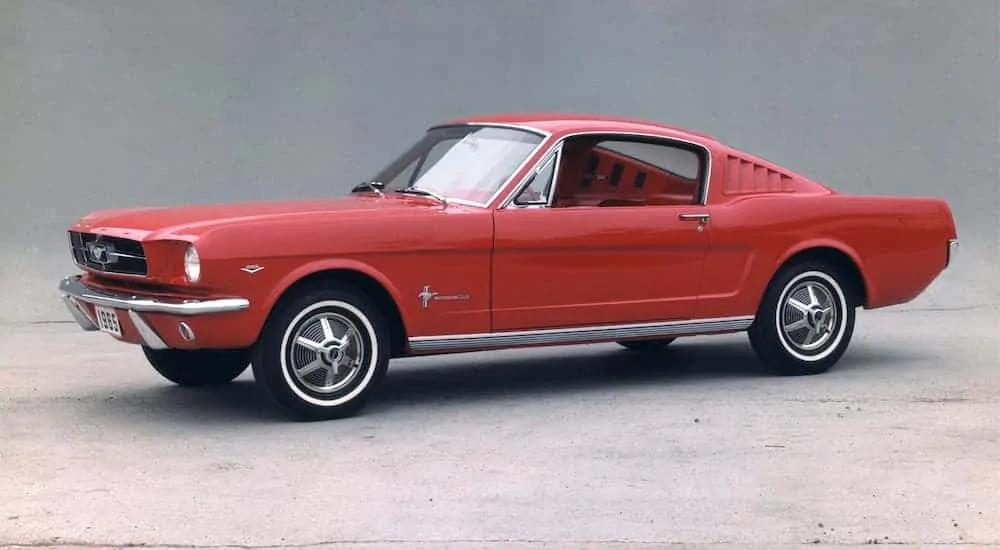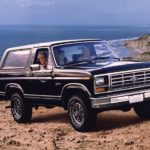Car owners tend to be extremely brand loyal, and very often that match is made in the early years. Perhaps our parents stayed fiercely loyal to a particular nameplate, and it rubbed off on us, or maybe someone we admired drove a car we always aspired to own. It could also be that these owners have a comfort level with a particular brand of vehicle. Whatever the reason, it’s not uncommon for someone to stick with the same brand forever. Some brands, like Ford, embody deep loyalty in their owners. Many current Ford owners recall the excitement of scouring the newspaper classifieds to find their very first used Ford for sale.
What exactly breeds such an unwavering loyalty to Ford in particular? There is something special about this iconic American nameplate. It creates a passionate ownership base that seems to transcend body style. Whether it’s a pickup truck, an SUV, or a heart-thumping Mustang Shelby GT350, long time Ford owners will never migrate to another automaker’s vehicles. Let’s explore America’s fascination with and commitment to Ford.
First on Race Day: Ford’s Performance Heritage
Ford is commonly described with a clever anagram: First On Race Day, but while it may be cute, it’s also true. The Ford Motor Company has a storied racing history, dating back to the 1800s, and that performance heritage is infused into every vehicle that rolls off the assembly line today.
In the late 1800s––1896 to be exact––Ford founder Henry Ford developed his very first car, the Quadricycle. The Quadricycle wasn’t much of a car; mounted on four bicycle tires and powered by a tiny 2-cylinder gas engine, this hand-built “horseless carriage” sold for $200, which was considered very expensive at the time. Mr. Ford successfully ran the Quadricycle at a top-end speed of 20 MPH, an unheard of engineering feat which began Ford’s foray into racing and performance.
Throughout the early 1900s, Henry Ford continued to design and engineer several gas-powered vehicles, including the Ford 999, the Model K, and––famously––the Model T. Also known as the Tin Lizzie, the iconic Ford Model T marked a turning point for Ford. Debuted in 1908, Ford produced the affordable Model T until 1927, using a production line assembly structure. In 1909, a Ford Model T won a 3600 km cross-country race, once again contributing to Ford’s soon-to-be long list of performance victories.
Fast forward to 1950, and Ford is handed its first NASCAR victory, thanks to driver Jimmy Florian. By 2013, Ford will win 1,000 NASCAR races, and as recently as 2018, Ford has found itself returning to NASCAR’s winner’s circle. In addition to Ford’s massive success in the NASCAR series, Ford has won 176 Formula One races.
This racing heritage promotes pride-of-ownership for past and current Ford owners because they know this commitment to leading performance is part of the vehicle they choose to drive. Even the 17-year-old newly licensed driver can appreciate that buying a used Ford they just found for sale online will make them part of a winning brand family. This pride and heritage dates all the way back to Henry Ford’s quirky Quadricycle.
The Mustang: A Fan Favorite
The name Mustang is synonymous with Ford and for a good reason. The Mustang represents everything Ford owners love about the brand: excitement, performance, distinctiveness, and good looks. Introduced in 1965, Mustang was designed for younger buyers that wanted a sporty, fun car to drive. The original pony car, the Mustang first came out as a convertible, a notchback, and, eventually, a fastback.
In its second year, Ford sold 607,500 Mustangs, far exceeding projections. Up to the 1974 model year, Ford followed consumer trends and continually increased the Mustang’s size and weight, causing a dip in sales. Then, late in 1974, Ford introduced the Mustang II, its smallest version, which hit dealerships just as the oil embargo threatened U.S. fuel supplies. The result: sales boomed, and the Mustang once again gained popularity.
At the turn of the new millennium, Ford began evolving the Mustang to meet ever-changing consumer demands. Size, powertrain, and body style grew, then shrank, then grew again. Flash forward to today, nearly 55 years after its launch, and you’ll see evidence of the original design and style infused into the new line of Mustang models. A highlight, the Shelby GT line of Mustang models, has enchanted performance-oriented drivers since 1965. At a starting MSRP of $6,0440, today’s Ford Mustang Shelby GT350 continues this tradition. With its 5.2-liter V8 engine producing a staggering 526 horsepower and redlining at 8,250 rpm, Ford puts a definitive exclamation point on its commitment to performance.
Ford’s Fiercely Loyal Pickup Truck Owners
Ford truck buyers are both loyal and demanding. As a result, they keep Ford on its toes, and Ford is rewarded year after year. The F-series remains one of America’s best-selling truck models today, and Ford truck owners are quick to defend their truck when challenged by others whose loyalty might be to other brands. There is no shortage of articles touting Ford as ‘better than’ its nemesis, Chevrolet. These spirited debates fuel an even deeper sense of loyalty among Ford Truck owners, with some taking personal offense to any opinions that might differ.
In a whimsical article posted by CJ Pony Parts, the authors compare the Ford F-150 to the Chevy Silverado. They point out that the F-150’s payload capacity is 1,000 pounds more than that of the Silverado (equivalent to 1 moose or 100 bowling balls!) and offers a two-inch larger truck bed. The independent parts seller is quick to acknowledge that both trucks are great, but even though they carry parts for both, they just like the F-150 a little better. This is a perfect example of the sometimes fun rivalry that promotes such devotion in Ford owners.
According to data from J.D. Power, Ford remains one of the most popular automakers in the country. Not only is Ford at the top of the popularity list; it also enjoys a considerable amount of brand loyalty when compared with other brands. J.D. Power estimates that more than half of previous Ford owners bought another Ford. That staggering statistic has stayed consistent for many years, dating back to even the Model T era, when over half of Americans owned a Model T. It is a truly incredible story of loyalty and trust in a brand, and an achievement only shared by a small list of other carmakers.
Shelby Cobra GT. F-150. Mustang. Just hearing these names conjures aspirational feelings. Who wouldn’t want to own a souped-up Mustang Shelby GT or see that rough-and-tumble F-150 waiting in the driveway every morning? Classic models are a carmaker’s way of threading tradition and continuity throughout its lineup of vehicles. Ford’s most recognizable brands achieve this effortlessly, and generations of Ford owners take pride in being a part of the Ford story.
It’s pretty easy to see why the Ford brand plants the seed of loyalty so early in a driver’s ownership experience. From the 16-year-old kid perusing used Ford vehicles for sale to the performance fanatic that finally takes delivery of their very first Shelby GT Mustang, Ford owners adopt their ferocious brand loyalty early and stick to it over the years, demonstrating their solid commitment by choosing Ford over and over again.






